Outdoor adventures and activities make for exciting hobbies. When you find an outdoor activity that you like and adopt it, it becomes a lifestyle. It is thrilling to find time, plan and go on the adventure that you know and love.
There are plenty of benefits of outdoor activities such as getting physical exercise, getting to breathe fresh air, and last but not least, getting a taste of that sweet serotonin after a great outdoor workout.
Hiking, trekking, mountaineering, camping, skiing, kayaking, rowing, and biking, etc. are some of the most popular choices when it comes to outdoor activities.
For a happy and safe adventure, it is very important to pick the right set of tools and the right gear. Ensuring that you do so will protect you from getting hurt and save you from a lot of discomforts that can keep you from enjoying your next adventure.
Table of Contents
Biking as an Outdoor Activity
Biking is one of the most common outdoor activities that people of any age, size, and shape can enjoy. Biking provides an excellent way of getting around the town while helping you get some exercise and saving on fuel costs.
It is an excellent cardio exercise that burns plenty of calories, keeps you in good shape, and exercises almost all of the major muscle groups in your lower body.
Mountain biking is a hobby that is catching up fast. Thrill seekers are seeing the incredible fun and adventures to be had on a mountain bike. Whether you are bombing a black diamond in Colorado or enjoying nice, smooth singletrack in North Carolina, mountain biking is an excellent way to get outside and go on an incredible adventure!
When you decide to take up mountain biking, one thing that you must take care of is your physical safety and health. Taking up mountain biking involves a lot of physical exertion, so it is important to train hard and build up your strength and stamina.
Gear Required for Mountain Biking
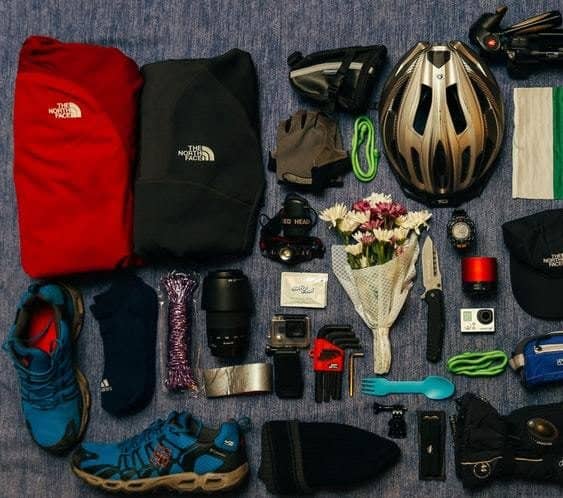
For the most part, mountain biking does not require a lot of special gear, except for the bike itself. However, when you make it a lifestyle choice, there are plenty of things that you can buy and utilize.
Some of the most essential gear that you would need for mountain biking are –
Mountain Bike Clothing
Clothing is one of the most important things to take care of while mountain biking. Mountain biking involves a lot of physical exertion, which results in plenty of sweating. Your clothing should be capable of quickly wicking away the moisture from your skin and keeping you dry.
Layer for colder weathers, but make sure that the layering is capable of wicking away moisture.
Shop the best mountain bike apparel on Backcountry!
Mountain Bike Helmets
Helmets are very important. Good helmets have been known to save lives and protect the wearer from life-threatening injuries, and not wearing one, or wearing a bad one can cost you your life or serious injury during accidents. Please take note that mountain biking can result in some serious falls and accidents and wearing or not wearing a good helmet can be the deciding factor between life and death.
Enduro season is upon you, the dirt is perfectly tacky, and the temperatures have yet to rise to oppressive levels and you're ready to hit the trail with no holds barred — just make sure to cover your dome first.
Mountain Bike Shoes
There are special cycling shoes that help to keep up the grip on the pedals while biking. Choosing the right shoe depends on the kind of bike you are riding, the terrain that you are riding on, and the kind of pedal that your bike has. It is important to wear the right kind of shoe to help minimize the fatigue on the foot, as well as to keep a good grip on the pedals.
Some cyclists will prefer clip pedals or pedals that your shoe clip into. This allows the cyclist to be completely attached to the bike, allowing them to have more control. On the other hand, a lot of mountain bikers like to have metal pedals with studs that stick up and bind well with most flat-bottomed shoes.
Enduro racers and bike park regulars appreciate added protection and a more flexible midsole for comfort. Find the latest Men's Mountain Bike Shoes for sale at Competitive Cyclist. Shop great deals on premium cycling brands.
Mountain Bikes
The mountain bike that you choose is the most important gear of all. The kind of bike that you choose depends on the kind of trail that you are going to be riding, on your own height and weight and on your cycling goals.
Choosing the right frame size for your bike can be the difference between a comfortable ride and a nightmare. Choosing a frame that’s too small can make your knees crash against the handlebars and choosing a frame that’s too big will cause you to lose stability and balance.
Find a wide range of custom and pre-built mountain bikes at Competitivecyclist.com. Choose from downhill to trail bike styles from top brands.
Types of Mountain Bikes Explained
Not all bikes are built the same, and not all types of bikes can handle different terrains. Based on the application, there are several types of bikes that are available in the market –
1. Road Bikes
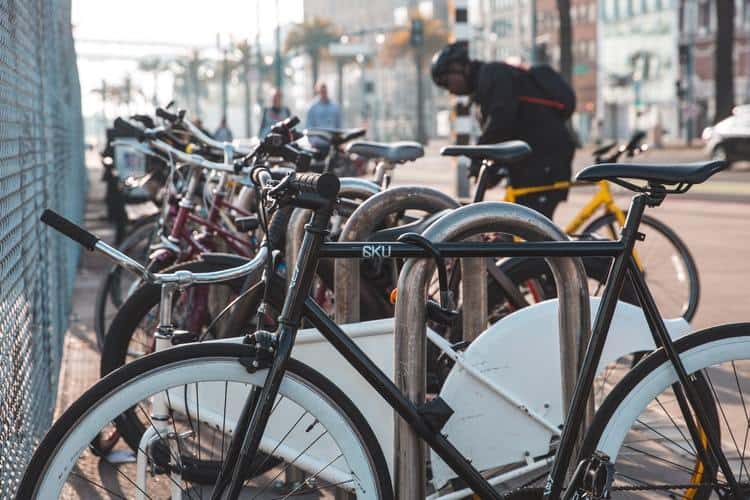
These bikes are mainly designed for riding on flat roads. They are used mostly for commuting but are also used for racing in events such as triathlons. Road bikes tend to give a smooth ride and can be fast, especially when you have a tailwind. Road bikes range from very comfortable to only comfortable while wearing a bib. Road bikes are usually equipped with multiple gears in the front and back and thin, smooth tires.
Find a wide range of custom and pre-built road bikes at Competitivecyclist.com. Choose from some of the best bicycle brands such as Pinarello, Willier, Storck, and more.
2. Cross Bikes/ Cyclocross
Cross bikes can be used for the city commute, as well as moderate mountain biking. They offer pedal and tire traction needed for most mountain biking trails as well as the comfort required for a city commute. Cross bikes can easily handle both smooth roads and most trails.
Battling it out for a World Cup win takes drive, skill, and a damned good bike. Trek cyclocross bikes give you every possible advantage in a full lineup of lightweight carbon and aluminum rides built to win in any conditions. We can’t promise you a rainbow jersey, but we guarantee these cross bikes will wring out your best race performance yet.
3. Mountain Bikes
Mountain bikes are designed to be used on moderate mountain trails, steep downhill shoots, your daily commute, long-distance off-road trekking, etc. etc. The mountain bike is certainly the most versatile bike and arguably the most fun! The tires are usually between 27.5” and 29” depending on the riders desired size. The tires also have great traction for climbing off road and hitting sharp turns at high speeds.
Find a wide range of custom and pre-built mountain bikes at Competitivecyclist.com. Choose from downhill to trail bike styles from top brands.
Mountain Biking
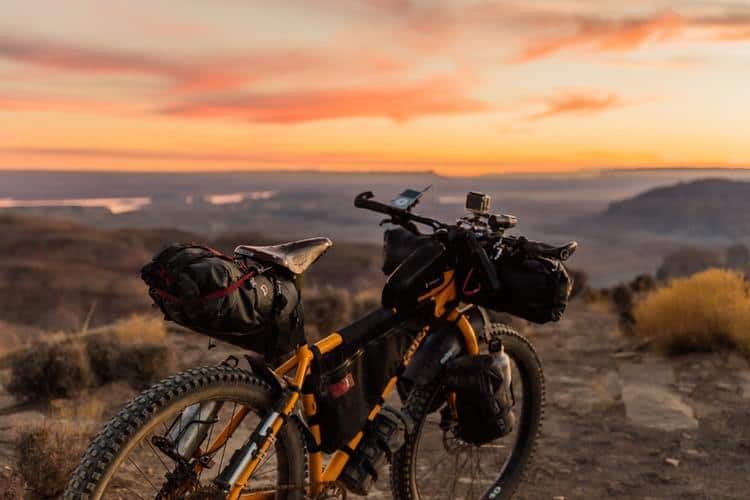
Mountain biking involves ridingPricier than other brakes on the marketce and physical stamina. Sometimes, the trails are narrow, and at other times, they don’t exist at all.
Mountain biking trails can be muddy or have gravel, which can cause the bike to skid and lose traction. There is a good level of control and skill required for mountain biking, which can come only through riding.
Mountain biking is not just about racing up and down a hill. There are many disciplines within mountain biking, some of which test endurance and some which test speed, yet all test the skill of the rider.
Some of the disciplines of mountain riding are –
1. Cross Country Biking (XC Mountain Biking)
This is the most common form of mountain biking, which involves riding in open spaces filled with mud as well as on mountains with narrow paths and gravel. While doing cross country biking, a rider must endure long periods of riding in bad conditions.
Cross Country Biking is mostly done on uneven and unexpected terrains that continuously challenge the rider. This type of riding is a great way to truly adventure on a mountain bike, allowing you to see more and be on your bike longer.
2. All Mountain Biking (Freeride)
This is a very challenging form of mountain biking. There may or may not be set trails for bikers to follow. The roads can be treacherous, and it requires a tremendous amount of concentration to do all mountain biking. All mountain biking relies on the rider ability to navigate crazy terrains and skillfully execute sharp turns and steep declines. Extreme control and skill are necessary for all mountain biking. Training hard is essential to be a skilled all mountain biker.
3. Downhill Mountain Biking
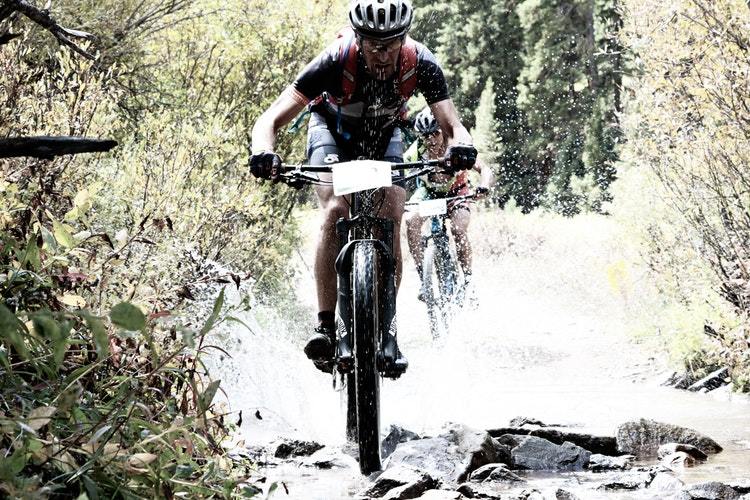
The most extreme form of mountain biking, downhill involves riding straight down the mountain and navigating the gaps, the crazy shape turns and multiple obstacles all while competing for a good time! The focus here is speed and flexibility to overcome crazy obstacles like wide jumps, rocks, trees, and gnarly terrain.
Control is essential to master in downhill mountain biking. Losing control can result in nasty falls and a bad injury. For downhill biking, riders do not ride up the hill, but they walk or use lifts to reach the top.
Downhill mountain biking is mostly done in a racing format.
4. Dirt Jump Mountain Biking
Dirt Jump is not typically done on a mountain, but in a dirt park which has a lot of ramps of varied inclines. Riders speed through a course and jump gaps from ramp to ramp. The trick here is to get more airtime and execute tricks to gain points on the course.
Dirt jump is a different type of riding completely and is all about testing a rider’s freestyle trick skills and speed.
Types of Mountain Bikes
Whatever type of mountain biking you are doing, it is essential to start slow and get your chops up before attempting more difficult trails and courses. Below are the different types of mountain bikes once can purchase depending on their agenda.
The types of mountain bikes that one can purchase are –
1. Cross Country (XC) Mountain Bikes
Cross Country Bikes need to have great suspension systems. Most beginners start with a single suspension bike (also called as hardtail bike). Single suspensions bikes can be easier to maneuver, but they lack real control and stability, which are provided by full-suspension bicycles.
Check some of the best Cross Country Mountain Bikes reviews and comparisons here:
2. Best All Mountain Bikes
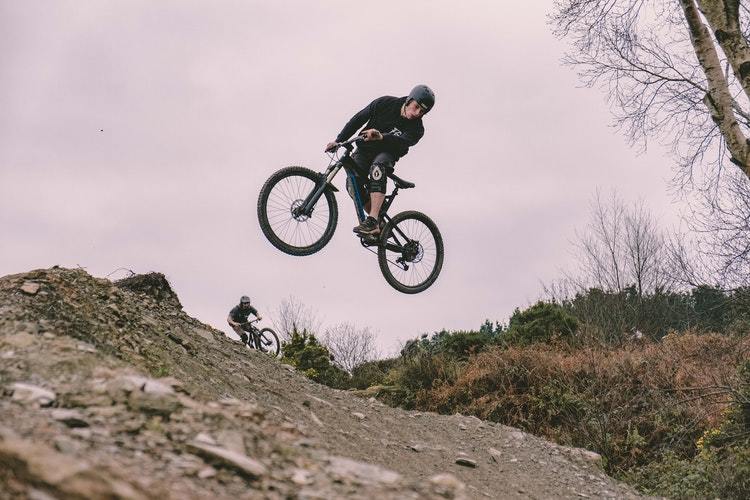
All mountain bikes are built to take the rugged terrains and sustain a lot of wear and tear. The tires are usually thicker to give the rider better traction. All mountain bikes are usually full-suspension bikes since stability and enduring impact is of prime importance when all mountain biking.
3. Downhill Mountain Bikes
Downhill bikes are the most complete and well-equipped mountain bike. They are full suspension and are typically nice and light for easier mobility. They are built to be closer to the ground and have an aerodynamic shape to facilitate higher speeds.
Downhill bikes need to have a very effective and rugged suspension system since there are huge jumps and crazy fast turns to be navigated through in downhill biking. It is difficult to ride these bikes uphill. They have a lower number of gears that make uphill a pain and downhill a pleasure.
4. Dirt Jump Bikes
These are the simplest of the lot, often not having any distinguishable extra features. Since dirt jump warrants, a lot of airtime, the bikes used for dirt jump is typically lightweight. Being lightweight facilitates mid-air tricks and speed. Most dirt jumps bikes only have front suspension.
Factors that influence your choice of mountain bike
Choosing the right mountain bike depends on what type of mountain biking you are doing. Based on the type, here are the features that should influence your decision –
MTB Frame Size
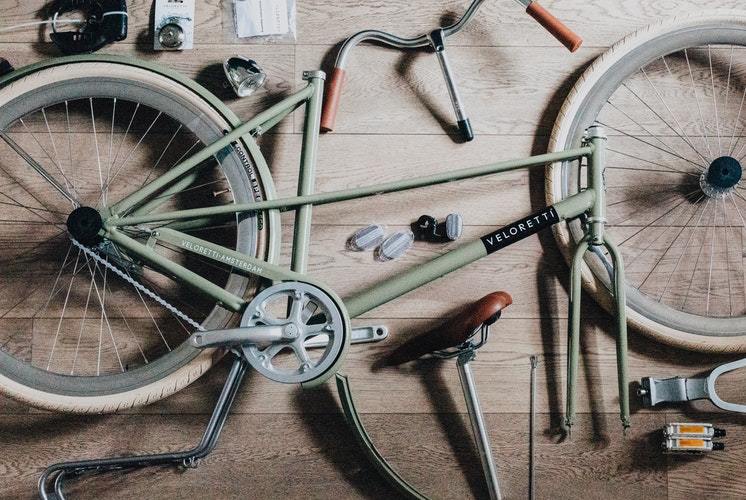
This is the most important thing to look out for when buying a mountain bike. Choosing a frame that fits your body ensures that you will have the most comfortable ride.
A bigger frame can shift your center of gravity, reducing the amount of control you have during your ride. A smaller frame can put a lot of pressure on your body, causing fatigue.
A bike of the right frame size gives you a good deal of control and comfort while riding. Finding the frame size needs some effort and measurements.
Here is a rough sizing guide for choosing the right frame size for mountain biking, based on your height. For best results, however, it is always good to check the mountain bike in person, try it for size and take a test ride to see if you are really comfortable on it.
| Height | Frame Size |
| 4’11”-5’3″ | 13-15 inches |
| 5’3″-5’7″ | 15-17 inches |
| 5’7″-5’11” | 17-19 inches |
| 5’11”-6’2″ | 19-21 inches |
| 6’2″-6’4″ | 21-23 inches |
| 6’4″ and above | 23 inches and above |
MTB Saddle
For the most part, the saddle that comes with the mountain bike is good enough. However, if you find that the seat is not comfortable, you can change them to fit your requirements.
Here is a list of things that you need to check to get the most comfortable fit for your saddle –
- Shape – In Mountain biking, riders usually spend less time on the saddle, so narrower seats make more sense. Narrow seats reduce the weight of the saddle and the bike as a whole, so it tends to be better, especially while racing downhill.
For endurance mountain biking, such as cross-country or freeride, you can go for a wider seat, provided you are not racing and don’t need to reduce the weight of the bike.
- Weight – Saddles can be heavy or lightweight. For mountain biking, you would need lightweight seats that do not add a lot of bulk to the bike.
- Padding –For mountain biking, the padding is usually less to reduce bulk and to prevent pinching and chafing that can happen with fast riding.
Suspension
There are three kinds of suspension that are usually used in mountain bikes –
- Rigid – This means that there is no suspension at all. Maneuvering is easy, but it completely lacks comfort and stability. These are typically the cheapest types of mountain bikes.
- Hardtail – It is a single suspension system on the front wheel of the bike. There is no suspension on the rear wheel of the bike. Hardtails are slightly more expensive compared to rigid bikes, but they are great for mountain bike beginners.
- Full-Suspension – Full-suspension bikes have suspensions on both front and rear wheels, and they give the most comfortable ride. They are designed they absorb the most impact and usually offer the highest level of traction. On the downside, full suspension bikes are difficult to ride uphill because of the high gear ratio.
Here is a comparison table on the suspension –
| Suspension | Ride Comfort | Maneuvering | Cost |
| Rigid | Very Low | Very High | Very Low |
| Hardtail | Low | High | Low |
| Full-Suspension | Very High | Very High | Very High |
Frame Material
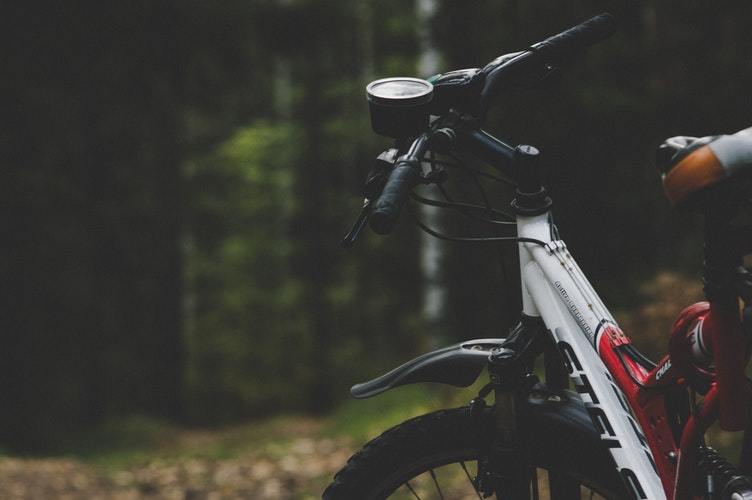
The material used for frames is important, as it is a deciding factor for the weight of the bicycle. Some of the most common materials used for bicycle frames are –
- Aluminum Alloy – This is the most preferred frame, as it is lightweight, low-cost and cost-effective.
- Steel – This is the cheapest and the toughest of the lot, but steel frames are heavy and not preferred for racing activities.
- Titanium – This is the lightest of all, but pretty expensive. Titanium frames are used in high-end racing bikes.
- Carbon Fiber – This material is tough and very lightweight, but expensive compared to aluminum, steel and titanium. Carbon is often used in high-end racing bikes.
Here is a comparison table –
| Material | Toughness | Weight | Cost |
| Aluminium Alloy | Medium | Medium | Medium |
| Steel | Very High | Very High | Very Low |
| Titanium | High | Very Low | Very High |
| Carbon Fiber | High | Low | High |
Other Factors to Consider
Apart from suspension and frame materials, there are other factors to be considered, such as the fit of the bike to the rider’s body and the braking capability.
Disc brakes have become a standard in all mountain bikes, except some entry-level ones. They are easier to replace when worn, as compared to the older rim braking systems, and provide more consistent braking under all conditions.
Mountain Bikes usually come with the sizing of S, M, and L, and it is almost a standard across all brands to follow similar parameters while choosing the size of a mountain bike.
It is always recommended that riders buy mountain bikes in person, after checking the fit and taking a test ride, to ensure that the fit is solid and any adjustments required can be made by professionals. While taking a test ride, it is important to check the ride quality over a varied set of terrains to see how the bike performs on all surfaces.
Caring for Your Mountain Bike (Maintenance)
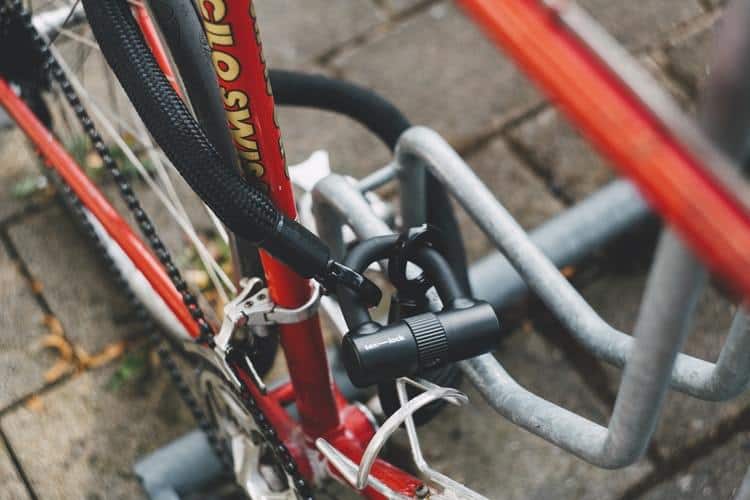
Keeping your mountain bike in a tip-top condition helps to keep it going at the top level of performance. Here are a few tips on how to maintain your mountain bikes –
- Once you take it for a spin, make sure you clean it thoroughly. Remove all traces of mud on the tires, and clean between the brake pads and all the nooks and crannies. Clean the pedals thoroughly to remove mud and dirt from all crevices.
- Always check the tire pressure before you use the bike and keep the tire pressure at the desired levels.
- Check your brake pads regularly and replace them as soon as you find out that they are worn. Not doing so can result in late or failure in braking, resulting in injury.
- Make sure that your brakes are neither too tight nor too soft. Tight brakes are very sensitive and can cause you to skid, while loose brakes can fail altogether.
- Make sure that the gears are well lubricated.
- Make sure that your wheels do not wobble. Line them up worth the frame to keep them straight while putting them back on.
How to Choose the Best Mountain Bike?
- Always base your choice on what kind of mountain biking you will be doing. Will you be racing downhill or simply strolling about town? Once you have this clear, then choosing the right mountain bike becomes easier.
- No matter what kind of mountain biking you are getting, always get the right frame size for your height. Frame size is something that you should never compromise on. It ensures comfort and safety.
- Saddles are important for you to choose from, but you can always have multiple saddles for your bike, and keep changing them as per your requirement.
- Suspension plays an important role. Choose a bike with the right suspension for the kind of mountain biking that you will be doing. For cross-country, you can go for rigid or hardtail suspensions. However, it is essential that you go with full suspension when riding downhill.
- Choose the frame material carefully. If you are going to be racing, choose lighter materials such as titanium or carbon. The cost will be an important consideration here. Steel frames are generally not at all recommended for any form of mountain biking. Go ahead and spend the extra money for the better bike, you won’t regret it.
You can choose a hybrid bike to fit all your needs, but it is generally recommended that you buy mountain bikes that are specifically made for a certain type of mountain biking, based on what you will be doing.
Best Mountain Bike Brand Recommendations
Some of the best mountain bikes come from the brands of Giant, Orbea, Yeti, Kona, GT, Cannondale, Trek, and Santa Cruz.
The mountain bike you choose should depend exclusively on your experience level and the type of mountain biking you plan on doing.
If you are a beginner, it is best to invest in a medium-range hard-tail bike, such as the Giant Fathom. This is a great beginner-intermediate mountain bike at an affordable cost. As you advance with your mountain biking skills, you can go for the pricier full suspension bikes like the Santa Cruz V10.
Check out more MTB Comparisons:
A Quick Look at Best Mountain Bikes for Kids
Most parents who like to ride mountain bikes, long for the day that their children can join them by riding their own mountain bike right next to them. There are a lot of different 20” mountain bikes on the market.
These special bikes are made just for children and feature a lot of special features that help the child to be able to have everything that they need in a top performing bicycle that will weather any storm and mountainous terrain.
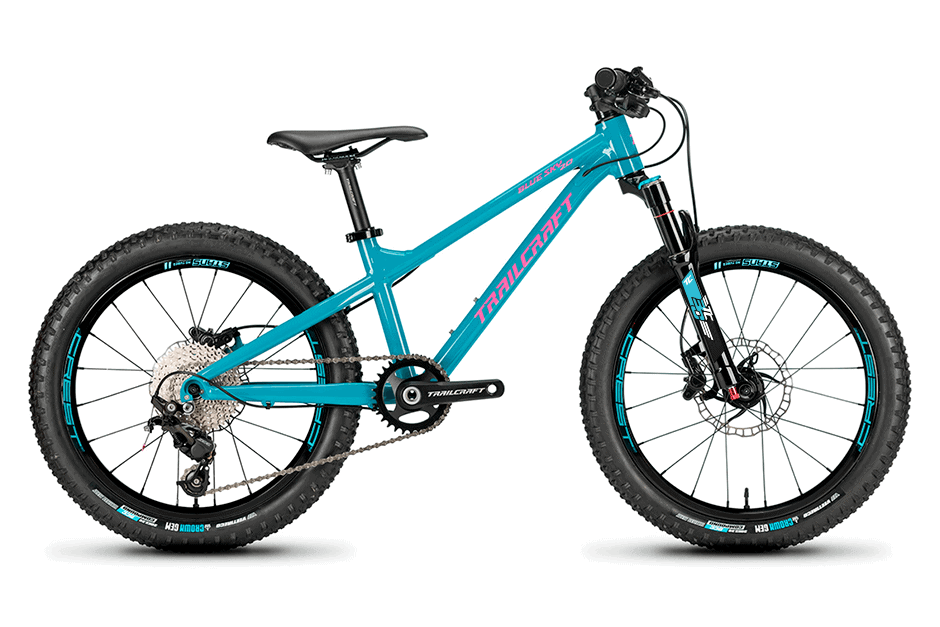
Would you prefer to simply purchase a complete bike that has a great wheelset already? Here are a few of our top recommendations for exactly that.
The Spawn Yama Jama 20”
The Spawn Yama Jama is one of the highest rated kids mountain bikes. It comes from the trusted Spawn brand and has great riding features. This bike is notorious for being comfortable and easy to ride. Plus, the high-quality frame helps the bike to withstand the beating that it will take when you are riding down mountains or through rough trails. It retails for around $1050.
Tailcraft Blue Sky 20
Tailcraft is another brand that users keep coming back to. Blue Sky 20 is a very nice 20” mountain bike that your child should really enjoy. This tough bike is great for hand me downs and is probably never going to be seriously damaged by your child, regardless of how rough of a rider he/she is.
Tailcraft has been an industry leader in mountain bikes and they put just as many details and attention into creating this bike for kiddos as they put into building a top quality bike for adults. This bike retails for around $1450.
Prevelo Zulu Three HEIR
The Prevelo Zulu is one of the best bikes on the market. This bike offers many kid-friendly aspects and is considerably cheaper than the adult version. It offers a 10-speed drive-train and a clutch. It has a number of awesome special features such as hydraulic brakes. It retails for around $1,200.
Easy Rider Trail T20SC
The Easy Rider Trail T20SC is a great mountain bike for your little adventurer. This bike features a number of great options like hydraulic brakes and a great wheelset. It is made from top quality materials and is perfect for those who are looking for something that wants their child to ride with them. The bike retails for just around $900.
Sharing the same lightweight aluminum frame as the Urban 3, the Belter 20 Trail 3S features the addition of a Spinner Air suspension fork with 50mm of travel, knobby tires, disc brakes and a belt-driven 3-speed internally geared rear hub.
Lil Shredder Prodigy
The Lil Shredder Prodigy is a very high-end kids bike. It is a great choice to help your ambitious child learn to love and master mountain biking. The bike has an awesome full suspension setup which makes for easy and comfortable to ride downhill. There are two options to buy the bike which include the completed trail build for around $2950 and the option to build your own with a shock and frame kit which costs around $1350.
Kona Honzo 20
The Kona Honzo 20 is a recently improved bike from a manufacturer who recently took a close look at the bike and made very necessary improvements. Now, this bike features everything that you need and nothing that you do not want. It has a lot of special features and is overall a great quality bike. This bike retails for around $675.
Cannondale Trail 20
The Cannondale Trail 20 is a great bike for beginner child riders as well as those who are more advanced and experienced. It has high-quality hydraulic brakes and features a ton of additional features. The bike retails for around $390.
See how Trail 20 compares to Cannondale Trail 7.
Take to the trails on this light, agile and fun Cannondale Trail 20 kids' bike. Its lightweight alloy frame and multi-surface tires are up for anything from sidewalk cruising to trail blazing.
See the Best Mountain Bike Brand Reviews Here:
- Cannondale vs Trek MTB Brand Comparison
- Santa Cruz Nomad vs Bronson
- Orbea Occam Review
- Alchemy Arktos 29 Review
- Diamond Sync’r Review
- Marin Pine MTB Review
- Juliana MTB Brand Review
- Pivot Trail 429 Review
- Cannondale Topstone 4 Review
- Ibis Bikes Review
- Santa Cruz Blur Review
Final Word on Mountain Bikes
Each of these mountain bikes offers features that you and your child are sure to appreciate and enjoy. By knowing that your child is riding a quality mountain bike, you can relax and enjoy the rides that you take together without worrying about problems that they might have or if they are going to be able to handle and enjoy the bike.
These bikes are a great choice for any new rider as well as the more experienced rider and they are packed into a smaller package to accommodate your kiddo’s size.
For new mountain bikers, we recommend that you do your due diligence and research what you need depending on your experience level and the type of mountain biking you will be doing. Feel free to use the information above to make an informed and educated decision!







